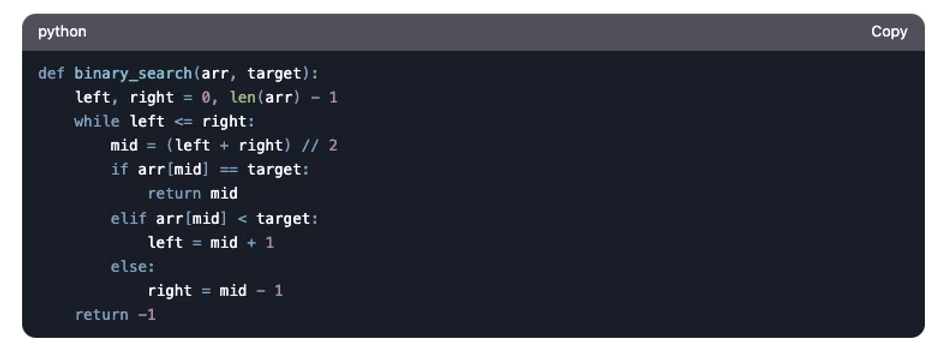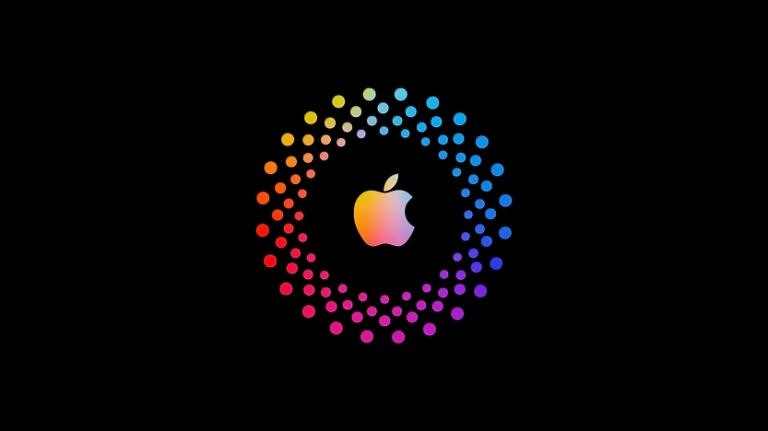If you’re preparing for a machine learning (ML) interview at Apple, you’re likely aiming for one of the most coveted roles in the tech industry. Apple is known for its cutting-edge innovations in AI and ML, from Siri’s natural language processing to the neural engines powering the latest iPhones. Landing a role here means you’ll be working on some of the most exciting ML projects in the world—but first, you’ll need to ace the Apple ML Interview Questions designed to test both your technical depth and real-world problem-solving skills. Mastering Apple ML Interview Questions can be the key to standing out from other candidates.
In this blog, we’ll break down the top 25 frequently asked questions in Apple ML interviews, complete with detailed answers and tips to help you prepare. Whether you’re a seasoned ML engineer or just starting out, this guide will give you the edge you need to stand out. And if you’re looking for personalized coaching and mock interviews, InterviewNode is here to help you every step of the way.
1. Introduction
Apple’s ML interviews are as challenging as they are rewarding. The company looks for candidates who not only have a strong grasp of machine learning fundamentals but also possess the creativity and problem-solving skills to apply that knowledge in real-world scenarios. From coding challenges to system design and behavioral questions, the interview process is designed to test every aspect of your technical and interpersonal skills.
In this blog, we’ve compiled the top 25 questions that Apple frequently asks in its ML interviews. Each question is accompanied by a detailed answer, explanations of why it’s important, and tips on how to approach it. By the end of this guide, you’ll have a clear understanding of what to expect and how to prepare effectively.
2. Overview of Apple’s ML Interview Process
Before diving into the questions, let’s take a quick look at Apple’s ML interview process. Understanding the structure will help you tailor your preparation.
Stages of the Interview Process
Resume Screening: Your resume will be evaluated for relevant experience, projects, and skills.
Technical Phone Screen: A 45–60 minute call focusing on coding, algorithms, and basic ML concepts.
On-Site Interviews: Typically 4–6 rounds covering:
Coding and algorithms
Machine learning fundamentals
System design and ML architecture
Behavioral and problem-solving questions
What Apple Looks For
Strong fundamentals in ML, statistics, and programming.
Ability to design scalable ML systems.
Clear communication and problem-solving skills.
Passion for innovation and collaboration.
Now that you know what to expect, let’s dive into the questions.
3. Top 25 Frequently Asked Questions in Apple ML Interviews
We’ve organized the questions into five categories to make your preparation easier:
Machine Learning Fundamentals
Deep Learning and Neural Networks
Programming and Algorithms
System Design and ML Architecture
Behavioral and Problem-Solving Questions
Let’s explore each category in detail.
Category 1: Machine Learning Fundamentals
1. What is the difference between supervised and unsupervised learning? Provide examples.
Answer:Supervised learning involves training a model on labeled data, where the input features are mapped to known output labels. The goal is to learn a mapping function that can predict the output for new inputs. Examples include:
Predicting house prices (regression).
Classifying emails as spam or not spam (classification).
Unsupervised learning, on the other hand, deals with unlabeled data. The model tries to find hidden patterns or structures in the data. Examples include:
Clustering customers based on purchasing behavior.
Dimensionality reduction using PCA.
Why It’s Important: Apple uses supervised learning for tasks like image recognition and unsupervised learning for clustering user data. Understanding both is crucial.
Tip: Be ready to explain how you’ve used these techniques in your projects.
2. Explain the bias-variance tradeoff. How does it affect model performance?
Answer:Bias refers to errors due to overly simplistic assumptions in the learning algorithm, leading to underfitting. Variance refers to errors due to the model’s sensitivity to small fluctuations in the training set, leading to overfitting.
High Bias: The model is too simple and performs poorly on both training and test data.
High Variance: The model is too complex and performs well on training data but poorly on test data.
The goal is to find the right balance to minimize total error.
Why It’s Important: Apple values candidates who can build models that generalize well to new data.
Tip: Discuss techniques like cross-validation and regularization to manage bias and variance.
3. How do you handle overfitting in a machine learning model?
Answer:Overfitting occurs when a model learns the training data too well, including noise and outliers, and performs poorly on new data. Techniques to handle overfitting include:
Regularization: Adding penalties for large coefficients (e.g., L1/L2 regularization).
Cross-Validation: Using techniques like k-fold cross-validation to evaluate model performance.
Simpler Models: Reducing model complexity by selecting fewer features or using simpler algorithms.
Early Stopping: Halting training when performance on a validation set stops improving.
Why It’s Important: Overfitting is a common challenge in ML, and Apple looks for candidates who can build robust models.
Tip: Share examples of how you’ve addressed overfitting in your projects.
4. What is cross-validation, and why is it important?
Answer:Cross-validation is a technique for assessing how well a model generalizes to an independent dataset. The most common method is k-fold cross-validation, where the dataset is split into k subsets. The model is trained on k-1 subsets and validated on the remaining subset. This process is repeated k times, and the results are averaged.
Why It’s Important: Cross-validation provides a more reliable estimate of model performance than a single train-test split.
Tip: Be prepared to explain how you’ve used cross-validation in your work.
5. Explain the concept of regularization. How does L1 differ from L2 regularization?
Answer:Regularization is a technique used to prevent overfitting by adding a penalty for large coefficients in the model. The two most common types are:
L1 Regularization (Lasso): Adds the absolute value of coefficients as a penalty. It can shrink some coefficients to zero, effectively performing feature selection.
L2 Regularization (Ridge): Adds the squared value of coefficients as a penalty. It shrinks coefficients but doesn’t set them to zero.
Why It’s Important: Regularization is key to building models that generalize well, a skill Apple highly values.
Tip: Discuss when you might choose L1 over L2 (e.g., when feature selection is important).
Category 2: Deep Learning and Neural Networks
6. What is backpropagation, and how does it work?
Answer:Backpropagation is the process of updating the weights of a neural network by propagating the error backward from the output layer to the input layer. It involves:
Calculating the error at the output layer.
Using the chain rule to compute gradients for each layer.
Updating the weights using gradient descent.
Why It’s Important: Backpropagation is the backbone of training neural networks, a core component of Apple’s ML projects.
Tip: Be ready to explain the math behind backpropagation.
7. Explain the difference between CNNs and RNNs. Where would you use each?
Answer:
CNNs (Convolutional Neural Networks): Designed for grid-like data (e.g., images). They use convolutional layers to detect spatial patterns.
RNNs (Recurrent Neural Networks): Designed for sequential data (e.g., time series, text). They use recurrent layers to capture temporal dependencies.
Why It’s Important: Apple uses CNNs for image processing in Photos and RNNs for speech recognition in Siri.
Tip: Provide examples of projects where you’ve used CNNs or RNNs.
8. What is the vanishing gradient problem, and how can it be addressed?
Answer:The vanishing gradient problem occurs when gradients become very small during backpropagation, causing weights to update slowly and training to stall. Solutions include:
Using activation functions like ReLU.
Initializing weights carefully.
Using architectures like LSTMs or GRUs.
Why It’s Important: This problem is common in deep networks, and Apple looks for candidates who can address it effectively.
Tip: Discuss how you’ve tackled this issue in your projects.
9. How does a transformer model work, and why is it important in NLP?
Answer:Transformers use self-attention mechanisms to process input sequences in parallel, making them faster and more efficient than RNNs. They’ve revolutionized NLP by enabling models like BERT and GPT.
Why It’s Important: Apple uses transformers for tasks like language translation and text generation.
Tip: Be ready to explain the self-attention mechanism in detail.
10. What are some common activation functions, and when would you use them?
Answer:
ReLU: Most common, used in hidden layers.
Sigmoid: Used in binary classification output layers.
Softmax: Used in multi-class classification output layers.
Tanh: Used in hidden layers for data centered around zero.
Why It’s Important: Activation functions are crucial for introducing non-linearity into neural networks.
Tip: Discuss the pros and cons of each activation function.
Category 3: Programming and Algorithms
11. Write a Python function to implement gradient descent from scratch.
Answer:

Why It’s Important: Gradient descent is a fundamental optimization algorithm in ML.
Tip: Be ready to explain the code and its components.
12. How would you optimize a slow-performing ML algorithm?
Answer:
Use more efficient algorithms (e.g., stochastic gradient descent).
Reduce dataset size using sampling or dimensionality reduction.
Parallelize computations using frameworks like TensorFlow or PyTorch.
Why It’s Important: Optimization is key to deploying ML models at scale.
Tip: Share examples of how you’ve optimized algorithms in your work.
13. Implement a binary search algorithm. What is its time complexity?
Answer:

Time Complexity: O(log n).
Why It’s Important: Binary search is a classic algorithm that demonstrates efficient problem-solving.
Tip: Be ready to explain the logic and time complexity.
14. How do you handle missing data in a dataset?
Answer:
Remove rows or columns with missing data.
Impute missing values using mean, median, or mode.
Use advanced techniques like KNN imputation or predictive modeling.
Why It’s Important: Handling missing data is a critical step in data preprocessing.
Tip: Discuss the trade-offs of each method.
15. Write code to shuffle a dataset without using built-in functions.
Answer:

Why It’s Important: Shuffling ensures that the model doesn’t learn any order-specific patterns.
Tip: Be ready to explain the Fisher-Yates shuffle algorithm.
Category 4: System Design and ML Architecture
16. How would you design a recommendation system for the App Store?
Answer:
Use collaborative filtering to recommend apps based on user behavior.
Incorporate content-based filtering to recommend apps with similar features.
Use hybrid models to combine both approaches.
Deploy the system using scalable infrastructure like AWS or Google Cloud.
Why It’s Important: Recommendation systems are a key part of Apple’s ecosystem.
Tip: Discuss how you’d handle challenges like cold start and scalability.
17. Explain how you would deploy a machine learning model at scale.
Answer:
Use containerization (e.g., Docker) to package the model.
Deploy using orchestration tools like Kubernetes.
Monitor performance using tools like Prometheus and Grafana.
Implement CI/CD pipelines for seamless updates.
Why It’s Important: Deploying models at scale is crucial for real-world applications.
Tip: Share examples of how you’ve deployed models in production.
18. What is the difference between batch processing and real-time processing in ML systems?
Answer:
Batch Processing: Data is processed in large chunks at scheduled intervals. Suitable for tasks like monthly reports.
Real-Time Processing: Data is processed as it arrives. Suitable for tasks like fraud detection.
Why It’s Important: Apple uses both approaches depending on the use case.
Tip: Discuss the trade-offs of each approach.
19. How would you handle data drift in a production ML model?
Answer:
Monitor model performance and data distributions over time.
Retrain the model periodically with new data.
Use techniques like domain adaptation to adapt to changing data.
Why It’s Important: Data drift can degrade model performance, and Apple looks for candidates who can address it.
Tip: Share examples of how you’ve handled data drift.
20. Design a system to detect fraudulent transactions using ML.
Answer:
Collect and preprocess transaction data.
Train a model using algorithms like logistic regression or random forests.
Deploy the model in a real-time processing pipeline.
Monitor and update the model regularly.
Why It’s Important: Fraud detection is a critical application of ML.
Tip: Discuss how you’d handle challenges like imbalanced data.
Category 5: Behavioral and Problem-Solving Questions
21. Tell me about a time you solved a challenging ML problem. What was your approach?
Answer:
Describe the problem and its significance.
Explain your approach, including data preprocessing, model selection, and evaluation.
Highlight the results and what you learned.
Why It’s Important: Apple values candidates who can tackle complex problems.
Tip: Use the STAR (Situation, Task, Action, Result) method to structure your answer.
22. How do you stay updated with the latest advancements in ML?
Answer:
Read research papers on arXiv.
Follow blogs and podcasts by industry leaders.
Participate in online courses and competitions.
Why It’s Important: Apple looks for candidates who are passionate about learning.
Tip: Mention specific resources you use.
23. Describe a project where you had to collaborate with a cross-functional team.
Answer:
Explain the project and your role.
Highlight how you collaborated with team members from different disciplines.
Discuss the outcome and what you learned.
Why It’s Important: Collaboration is key at Apple.
Tip: Emphasize your communication and teamwork skills.
24. How do you prioritize tasks when working on multiple ML projects?
Answer:
Use project management tools like Jira or Trello.
Prioritize tasks based on deadlines and impact.
Communicate regularly with stakeholders.
Why It’s Important: Apple values candidates who can manage their time effectively.
Tip: Share examples of how you’ve juggled multiple projects.
25. What would you do if your model’s performance suddenly dropped in production?
Answer:
Investigate the cause (e.g., data drift, model degradation).
Roll back to a previous version if necessary.
Retrain the model with updated data.
Why It’s Important: Apple looks for candidates who can handle real-world challenges.
Tip: Discuss how you’d communicate the issue to stakeholders.
4. Tips for Acing Apple’s ML Interviews
Master the Basics: Ensure you have a strong grasp of ML fundamentals, algorithms, and coding.
Practice Coding: Use platforms like LeetCode and InterviewNode to hone your skills.
Understand Apple’s Ecosystem: Research how Apple uses ML in its products.
Communicate Clearly: Practice explaining complex concepts in simple terms.
Show Passion: Demonstrate your enthusiasm for ML and innovation.
5. How InterviewNode Can Help You Prepare
At InterviewNode, we specialize in helping software engineers like you prepare for ML interviews at top companies like Apple. Our resources include:
Mock Interviews: Simulate real interview scenarios with expert feedback.
Practice Questions: Access a curated library of ML and coding questions.
Personalized Coaching: Get one-on-one guidance tailored to your needs.
Ready to take your preparation to the next level? Sign up for InterviewNode today and start your journey toward landing your dream job at Apple.
6. Conclusion
Preparing for an ML interview at Apple is no small feat, but with the right resources and mindset, you can succeed. Use this guide to familiarize yourself with the top 25 questions and practice them thoroughly. Remember, the key to acing your interview is a combination of technical expertise, clear communication, and a passion for innovation.
And don’t forget—InterviewNode is here to support you every step of the way, register for the free webinar to know more and get started.






